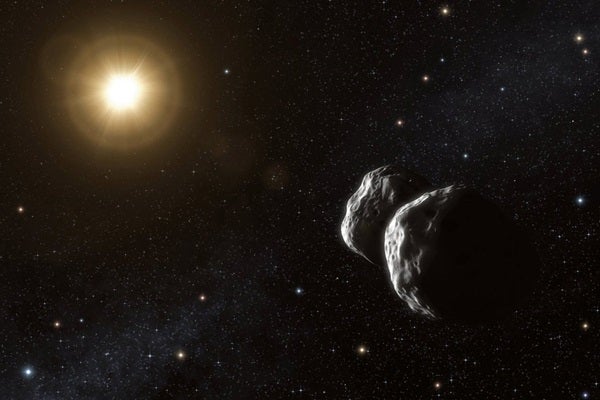A new method to measure the size and shape of asteroids that are too small or too far away for traditional techniques increases the number of measurable asteroids by a factor of several hundred. A team of French and Italian astronomers devised this method that takes advantage of the unique capabilities of European Southern Observatory’s (ESO) Very Large Telescope Interferometer (VLTI).
“Knowledge of the sizes and shapes of asteroids is crucial to understanding how, in the early days of our solar system, dust and pebbles collected together to form larger bodies and how collisions and re-accumulation have since modified them,” said Marco Delbo from the Observatoire de la Côte d’Azur, France, who led the study.
Direct imaging with adaptive optics on the largest ground-based telescopes such as the Very Large Telescope (VLT) in Chile, space telescopes, and radar measurements are currently the favored methods of asteroid measurement. However, direct imaging, even with adaptive optics, is generally limited to the 100 largest asteroids of the main belt, while radar measurements are constrained mostly to observations of near-Earth asteroids.
Delbo and his colleagues have devised a new method that uses interferometry to resolve asteroids as small as about 9 miles (15 kilometers) in diameter located in the main asteroid belt, 120 million miles (200 million kilometers) away. This is equivalent to being able to measure the size of a tennis ball a distance of 620 miles (1,000 kilometers). This technique will not only increase the number of objects that can be measured dramatically, but it brings small asteroids that are different from the well-studied larger ones into reach.
The interferometric technique combines light from two or more telescopes. Astronomers proved their method using VLTI, combining the light of two of the VLT’s 26.9-foot (8.2-meter) Unit Telescopes. “This is equivalent to having vision as sharp as that of a telescope with a diameter equal to the separation between the two VLT Unit Telescopes used, in this case 154 feet (47 meters), ” said co-author Sebastiano Ligori from INAF-Torino, Italy. The researchers applied their technique to the main belt asteroid (234) Barbara, which was found earlier by co-author Alberto Cellino, to have rather unusual properties. Although it is so far away, the VLTI observations also revealed that this object has a peculiar shape. The best fit model is composed of two bodies each the size of a major city – with diameters of 23 miles (37 kilometers) and 13 miles (21 kilometers) – separated by at least 15 miles (24 kilometers). “The two parts appear to overlap,” said Delbo, “so the object could be shaped like a gigantic peanut, or it could be two separate bodies orbiting each other.”
If Barbara proves to be a double asteroid, this is even more significant. Astronomers can then compute the density of these objects by combining the diameter measurements with the parameters of the orbits. “Barbara is clearly a high priority target for further observations,” said Ligori.
Having proven the validity of their new and powerful technique, the team can now start a large observing campaign to study small asteroids.










